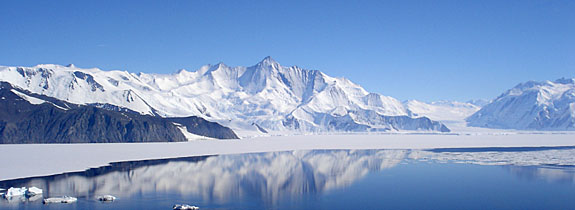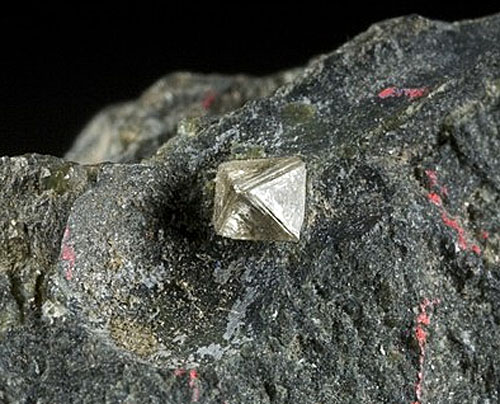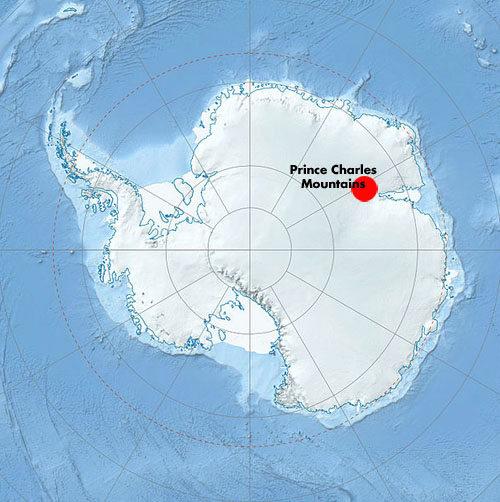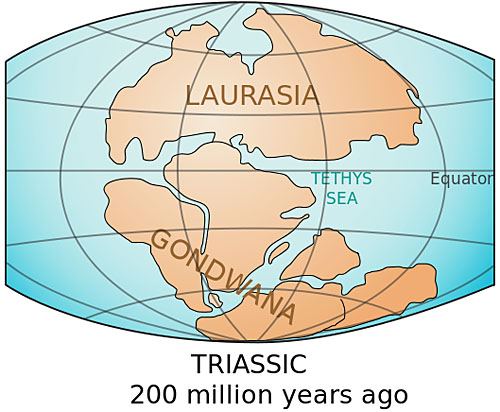December 31st, 2013
A team of scientists has uncovered kimberlites in Antarctica’s Prince Charles Mountains, a sure sign that untapped diamond riches are lying just below the icy surface of the southernmost continent.

Diamonds are formed under intense heat and pressure about 100 miles below the surface. They can be brought to the surface in powerful eruptions and preserved in the distinctive igneous rock formations called kimberlites. The presence of kimberlite has been a clue to huge deposits of diamonds in several parts of the world, including Africa, Siberia and Australia.

Findings published in the journal Nature Communications reveal that the particular rocks unearthed in eastern Antarctica are considered “Group One” kimberlites. They are estimated to be 120 million years old and are similar to the ones found in diamond-rich areas on other continents.
“It would be very surprising if there weren't diamonds in these kimberlites," lead researcher Greg Yaxley from Australian National University told Reuters.

Before you pack your bags and plan a prospecting trip to the Prince Charles Mountains of Antarctica, you should know that in 1991 the international community, led by the U.S. and China, imposed a 50-year mining ban in Antarctica. What will happen after 2041 is anyone’s guess.
Despite his team's discovery, Yaxley is not enthusiastic about the idea of diamond mining in the coldest place on Earth. "I don't think it's terribly practical that anyone could actually explore successfully," Yaxley told Reuters. "Personally, I hope that mining does not take place."

Interestingly, 200 million years ago, Antarctica was part of the supercontinent of Gondwana, which included the merged land masses of South America, Africa, Australia, the Arabian Peninsula and the Indian Subcontinent.
The age of the Antarctic kimberlites and their chemical, mineral and physical features suggest they are part of a huge Cretaceous kimberlite province, Yaxley suggested. This vast region is responsible for many of the world's diamonds, and is now apparently spread across most of the continents that were once part of Gondwana.

Diamonds are formed under intense heat and pressure about 100 miles below the surface. They can be brought to the surface in powerful eruptions and preserved in the distinctive igneous rock formations called kimberlites. The presence of kimberlite has been a clue to huge deposits of diamonds in several parts of the world, including Africa, Siberia and Australia.

Findings published in the journal Nature Communications reveal that the particular rocks unearthed in eastern Antarctica are considered “Group One” kimberlites. They are estimated to be 120 million years old and are similar to the ones found in diamond-rich areas on other continents.
“It would be very surprising if there weren't diamonds in these kimberlites," lead researcher Greg Yaxley from Australian National University told Reuters.

Before you pack your bags and plan a prospecting trip to the Prince Charles Mountains of Antarctica, you should know that in 1991 the international community, led by the U.S. and China, imposed a 50-year mining ban in Antarctica. What will happen after 2041 is anyone’s guess.
Despite his team's discovery, Yaxley is not enthusiastic about the idea of diamond mining in the coldest place on Earth. "I don't think it's terribly practical that anyone could actually explore successfully," Yaxley told Reuters. "Personally, I hope that mining does not take place."

Interestingly, 200 million years ago, Antarctica was part of the supercontinent of Gondwana, which included the merged land masses of South America, Africa, Australia, the Arabian Peninsula and the Indian Subcontinent.
The age of the Antarctic kimberlites and their chemical, mineral and physical features suggest they are part of a huge Cretaceous kimberlite province, Yaxley suggested. This vast region is responsible for many of the world's diamonds, and is now apparently spread across most of the continents that were once part of Gondwana.



